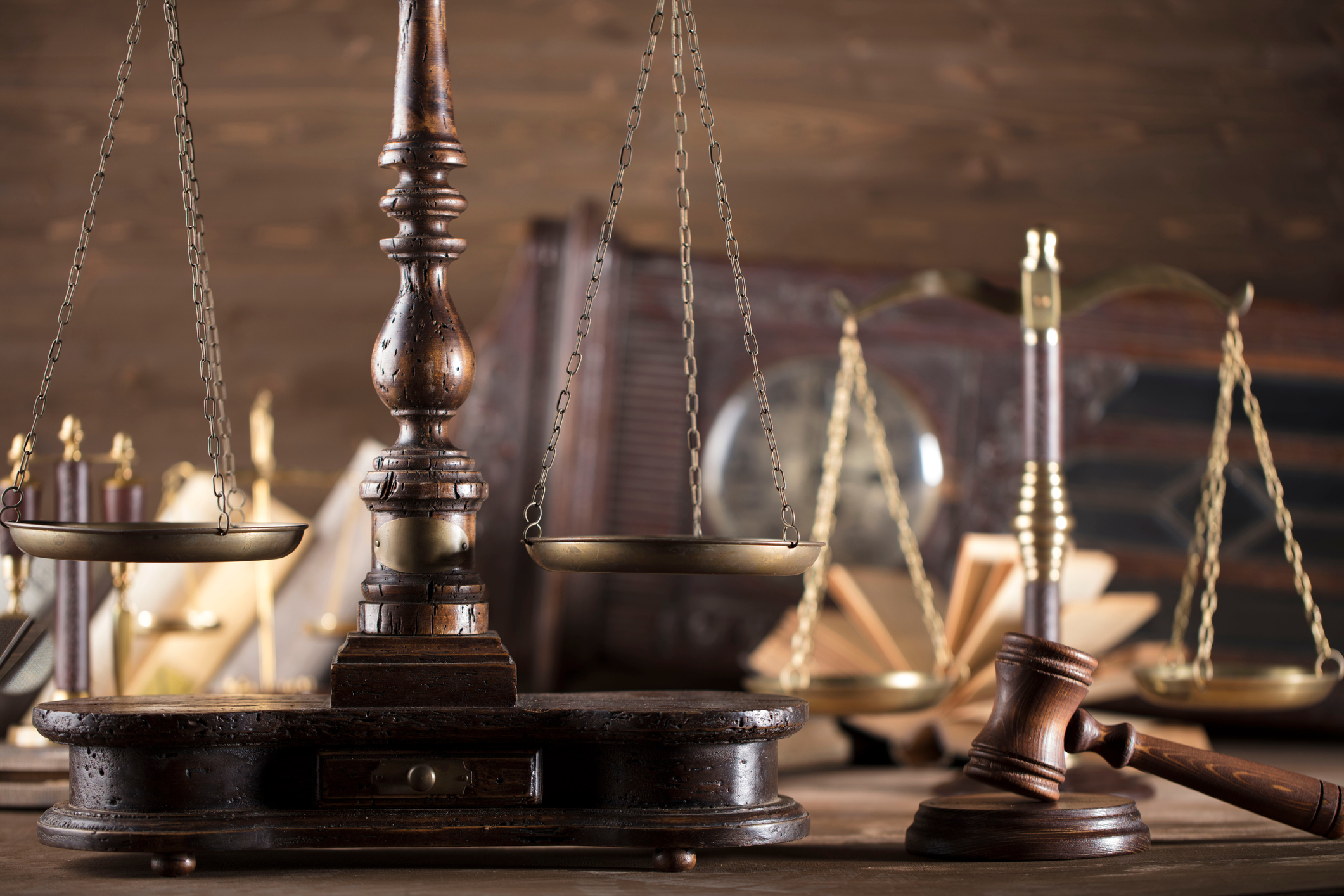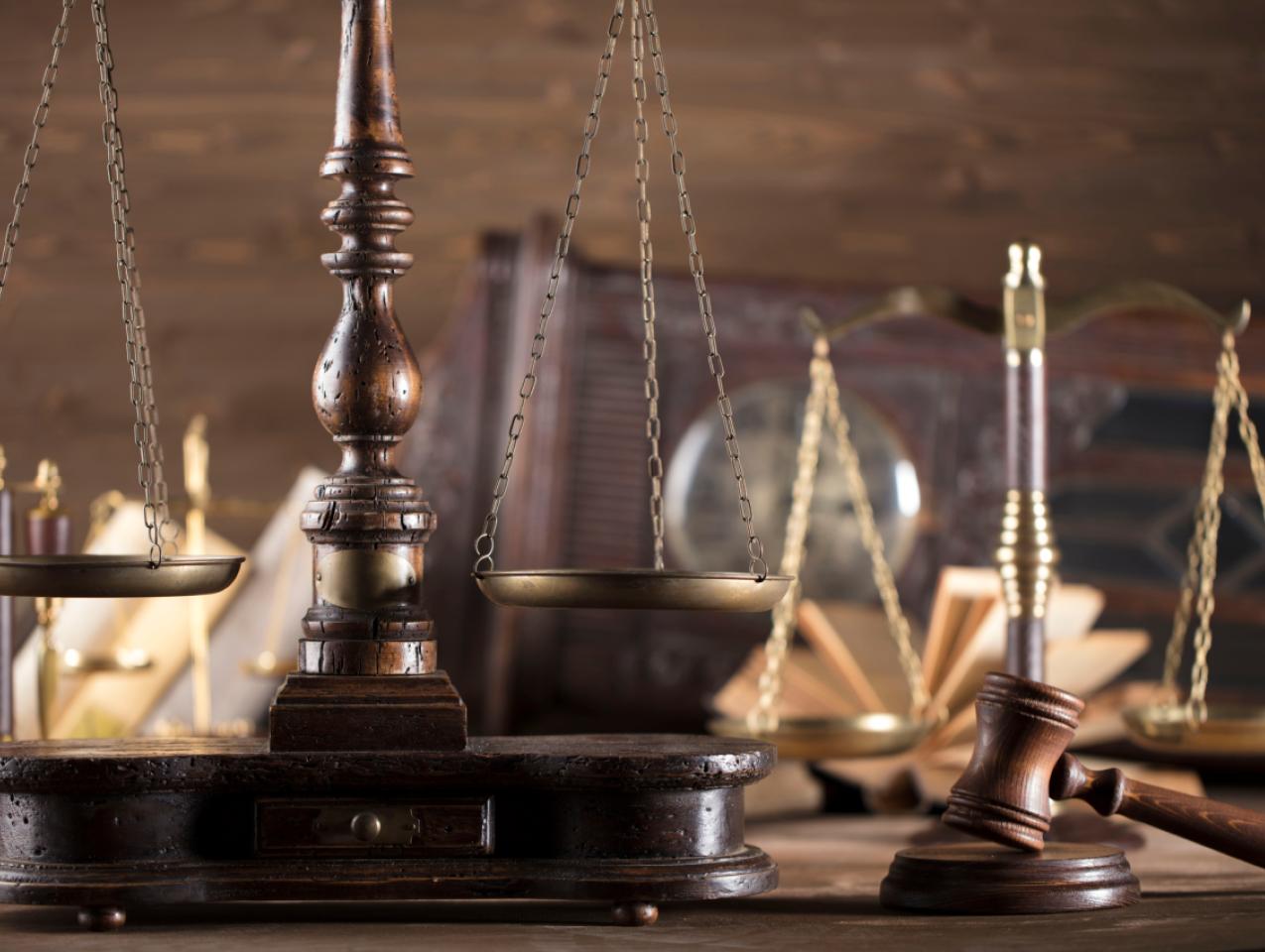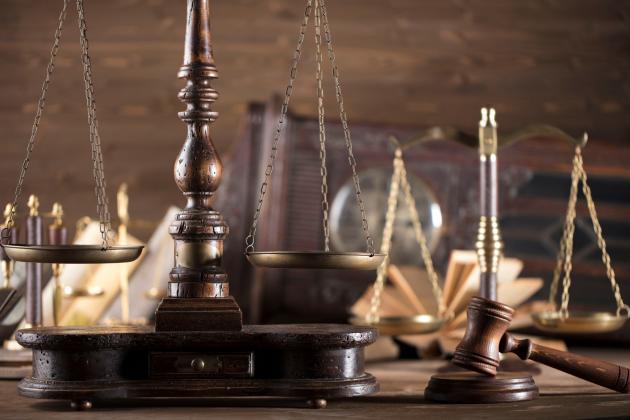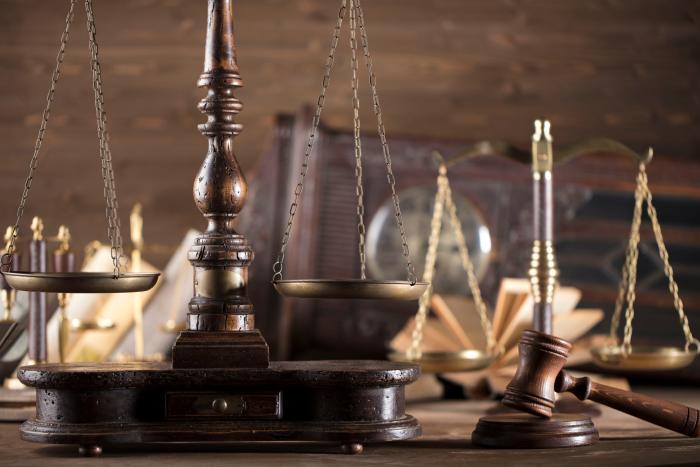- Law & Policy
- Politics, Institutions, and Public Opinion
- The Presidency
- Judiciary
- Congress
- State & Local
Editor’s note: This is an excerpt from a fuller essay by Professor McConnell, “Socialism and the Constitution,” that is published by the Hoover Institution as part of a new initiative, Socialism and Free-Market Capitalism: The Human Prosperity Project.
Justice Oliver Wendell Holmes famously described the US Constitution as “made for people of fundamentally differing views” (Lochner v. New York dissent). By that he meant that the Constitution does not commit the nation to any particular ideological or economic theory, including laissez-faire capitalism. Instead it leaves decisions about national policy to the democratic process, subject to the constraints of the Bill of Rights.
Within the range of ordinary politics, Holmes was correct: Americans can decide, through their elected representatives, to have high taxes or low, generous welfare payments or a basic social safety net, government-owned enterprises or privatization, heavy-handed or light-touch regulation. That is the difference between democratic socialism and a largely free-enterprise economy. As practiced (more in the past than today) in the Scandinavian countries, “democratic socialism” has meant a capitalist, private-profit-driven market economy, with high rates of taxation and economic redistribution. In its postwar British incarnation, “democratic socialism” added government ownership of major industry. (This was abandoned mostly for the pragmatic reason that government is not a good manager of economic enterprise.)
None of this is forbidden by the US Constitution. Congress can set taxes as high as it wishes and can devote the proceeds to redistributionist policies. Governments can, if they wish, use the power of eminent domain to seize ownership of the means of production (provided that owners are compensated for the value of property taken), and they have owned and run large enterprises like the Tennessee Valley Authority. Regulation of some sectors of the economy can be so extensive that the companies are rendered “private” in name only. Most policies that go by the label “democratic socialism” are thus permitted under the Constitution, so long as these objectives are pursued peacefully, democratically, and in accordance with law.
But the Constitution is not completely indifferent to the nature of the socioeconomic regime. It does not commit the nation to any one set of policies, but it stands as a barrier to revolutionary absolutism; it rests on a philosophy of individual rights that is most consistent with liberal democracy and private property; and it contains a number of safeguards designed to foster a free and prosperous economy.
The Constitution Resists Convulsive Change
The Beatles were right in their song “Revolution”: a socialist revolution inspired by “pictures of Chairman Mao” (or T-shirts of Che Guevara) would indeed have to “change the Constitution.” Revolutions entail violence undisciplined by law or orderly process; the Constitution requires due process of law, enshrines the right of habeas corpus, forbids arbitrary confinement, and interposes a jury of one’s peers between the accused and his accusers. Revolutions displace elected government with self-appointed leaders purporting to speak in the name of the people; the Constitution reserves governing power to republican institutions, with regular elections at specified intervals.
Revolutions seize control over the media for dissemination of news and opinion; the First Amendment insists that these be under decentralized private control, allowing dissenting voices to be heard—even voices deemed by the dominant group to be retrograde or pernicious. A socialist revolution along Marxist or Maoist lines would bring an end to private property and the market ordering of society through private contract, while the Constitution, by contrast, explicitly protects private property and the obligation of contract.
Of course, this presupposes that at a time of revolutionary upheaval the guardrails of the Constitution would be respected. That is far from certain. It might even seem improbable; revolutionaries do not typically respect the niceties of written constitutions. But the structural features of the US Constitution—its division of power among a large number of independently chosen and controlled entities—is designed to make it as difficult as possible for mass movements to impose their will on the nation as a whole, without the time for reflection and resistance.
Power is divided among three branches at the national level, fifty different states, and thousands of municipalities, with coercive authority further divided among police, militia, and military. A faction pushing radical change cannot simply seize the levers of power at one central location; it has to build support in diverse places like California and Texas, Chicago and Pensacola. Although the “influence of factious leaders may kindle a flame within their particular States,” James Madison wrote, the diffusion of political authority will make them “unable to spread a general conflagration through the other States” (Federalist No. 10).
Even apart from actual revolution, the checks and balances built into American government make it difficult for anyone, whatever his or her ideology, to achieve rapid and transformative change. Both Barack Obama and Donald Trump swept into office with the support of both houses of Congress (Obama with a filibuster-proof majority in the Senate), but both presidents committed the political sin of overreach, both had their agendas delayed by a judiciary that was largely named by the other party, and both lost their majority in the House of Representatives in just two years.
Our Constitution allows democratic change, but the checks and balances in the system are designed to slow things down, to give the American people time to reflect on whether the change being pressed by their representatives is really desirable. The Founders attempted to mold public democratic institutions in such a way as to protect “the rights of the minor party” from the “superior force of an interested and overbearing majority” (Federalist No. 10). The constitutional system might thus be described as small-c conservative: not right-wing, but resistant to rapid and convulsive change from either the right or the left.
The Constitution’s principal mechanism for taming and controlling the power of majority factions was what today we would call diversity, and the founders called “multiplicity of factions.” In a relatively homogeneous district or jurisdiction, a particular group—whether ideological, economic, religious, racial, or based on some other common characteristic—can dominate and sweep all before it, without need for compromise or for consideration of the concerns and interests of dissenters. When the majority is “united by a common interest, the rights of the minority will be insecure” (Federalist No. 51). The all-white districts of the Jim Crow South provide a familiar historical example: political leaders in such districts had no political need to heed the interests of the African-American minority disadvantaged by their policies.
But the point can be generalized. Modern social science research has confirmed Madison’s intuition that the presence of dissenting voices within deliberative bodies has the effect of reducing polarization and moderating their views. Diversity of ideas thus mitigates the dangers of ideological faction. That is why multimember legislative bodies, elected from a variety of heterogeneous districts, are less susceptible to extremes than social movements or the executive branch, and why the framers intended Congress to be the central institution for national policy making.
To be sure, this system slows the pace of change, but the Founders regarded this as a plus. It is not possible for people to order their affairs and plan for the future without a certain confidence that the rules will not change in the middle of the game. Not only does uncertainty about the law “[poison] the blessings of liberty itself,” as Madison wrote, but it dampens the incentive for socially productive economic endeavor.
The Philosophy of the Constitution
Although democratic socialism is not “unconstitutional” if achieved through democratic means, the Constitution has a certain philosophical content, which impresses itself subtly and powerfully on the national ethos. The Constitution was written against a backdrop of natural rights theory, in which the predominant purpose of government was to protect the life, liberty, and property of each person. The founders understood that government of this sort would not only “secure the blessings of liberty” but also establish the preconditions for long-lasting national prosperity. The Constitution did not bind future generations to any particular ideology, but it did presuppose the importance of individual rights, and it laid the groundwork for the most productive economy the world has ever seen.
As the English philosopher John Locke and the American founders understood, government itself can be as dangerous to the rule of law as private wrongdoers, and can be just as much a threat to property and personal security. The American Revolution was sparked by a British soldier shooting an innocent Bostonian during a protest. An uncontrolled government is not much less dangerous than a mob and may be more so.
That is why the recent police brutality and misconduct connected with the killing of George Floyd tapped so deeply into the shared American consciousness. Persons armed with the coercive power of the state must be bound by the rule of law, no less than private malefactors. As James Madison wrote, “In framing a government which is to be administered by men over men . . . you must first enable the government to control the governed; and in the next place to oblige it to control itself” (Federalist No. 51). The first step in Locke’s logic was that “every man has a property in his own person: this nobody has any right to but himself. The labor of his body, and the work of his hands, we may say, are properly his.”
How then do we reckon with slavery? If all human beings are “free, equal, and independent,” then how could the Constitution permit, and even protect, that institution?
Recent efforts such as the New York Times’s “1619 Project” to portray slavery as foundational to the American ethos have it backwards: from the beginning, slavery was in blatant contradiction to the governing philosophy of the new nation, and it had to be eliminated before America could be true to itself.
Eventually, the Constitution was amended in the wake of the Civil War to correct the most obvious constitutional flaws stemming from the slavery compromise and attendant racism.
First, the Thirteenth Amendment put an end to slavery and involuntary servitude, thus removing the most obvious exception to the natural rights principles of the Constitution.
Second, the Fourteenth Amendment extended the rights of citizenship to formerly enslaved people, and indeed to all persons born in the United States (with minor exceptions). These “privileges and immunities of citizens of the United States” include the basic rights to participate in civil society: to own, sell, and use property; to make and enforce contracts; and to equal application of criminal law and protections for personal security, among others. Locke would recognize all of these as fundamental rights.
Third, all persons were guaranteed the “equal protection of the laws,” thus for the first time enshrining the principle of equality under the law into the Constitution and striking a blow against the evil of racial discrimination.
Fourth, the protection of due process of law was extended to acts of states as well as the federal government. The original framers had assumed that state governments, being closer to the people, would be less dangerous to their rights than the more distant and less accountable national government, which is why the Bill of Rights applied only at the national level. The experience of antebellum slavery, which entailed assaults on almost every fundamental freedom, showed that was an error.
And finally, the Fifteenth Amendment forbade voting discrimination on the basis of race—the first of a series of constitutional amendments expanding the right to vote.
Subsequent amendments and civil rights statutes further advanced these principles. Adherence to those principles is the most promising means ever devised for achieving both personal liberty and social prosperity.
Our Present Discontent
As we experience the multiple crises of 2020, the Constitution’s safeguards against oppressive majority factions seem to be losing some of their force. Instead of a multiplicity of factions, American politics appears to be hardening into just two, with a winner-take-all attitude and winners determined primarily by turnout rather than appeals to the middle. Congress has become largely reactive and dysfunctional, with the national policy focus shifting to an overly powerful executive branch. This effectively replaces the constitutional system of checks and balances with what amounts to a plebiscitary democracy. Moreover, the rapidity and national scope of twenty-first-century communication, especially with the advent of social media, makes it easier than ever before for people to “kindle a flame” of faction (in Madison’s dramatic words) into a “general conflagration.” The engines of this conflagration may be the populist right, the progressive left, or something else entirely.
The Madisonian system relied on the idea that public-spirited leaders representing a multiplicity of factions would have sufficient time and independence to deliberate in good faith with representatives of contrary interests and views and act on the basis of the long-term interests of the nation as a whole. The results of this deliberation, Madison thought, would be more consonant with protecting “both the common good and the rights of other citizens” (Federalist No. 10). Leaders would vote for policies they thought wise and would face the voters several years later on the basis of how well those policies worked. Today, by contrast, political and opinion leaders are often subservient to the hair-trigger reactions of Twitter-mobilized factions, which have no patience for compromise, little interest in long-term consequences, and a seeming delight in making life miserable for their opponents.
Politics in the age of social media is less a search for broad solutions than a zero-sum struggle for dominance, with deliberation and compromise signaling weakness.
The greatest challenge of our day is not the receptivity of young people to the siren song of socialism, however troubling that may be. It is the susceptibility of our political culture to demagoguery and division on a scale unprecedented in recent American history. We are fortunate that America’s constitutional institutions are as strong and resilient as they are. The stresses on the system from irresponsible leaders egged on by “the demon of faction” (as Hamilton called it) have been formidable. It would be tempting to hope that electing a better class of leaders would get us out of this predicament. But that is a futile hope, for, as Madison warned, “enlightened statesmen will not always be at the helm.” The excesses on one side serve only to fuel new excesses among its opponents.
Real solutions will require the revitalization of stabilizing institutions such as responsible political parties, a credible press, civic education, a larger role for legislative deliberation, and an administrative state governed by the rule of law. Perhaps when the current interlocking crises subside, the American people will be more willing to turn again in that direction. If they do, they will find in the Constitution what Madison called “a republic remedy for the diseases most incident to republican government” (Federalist No. 10).
















